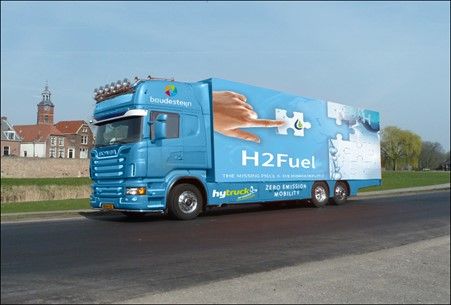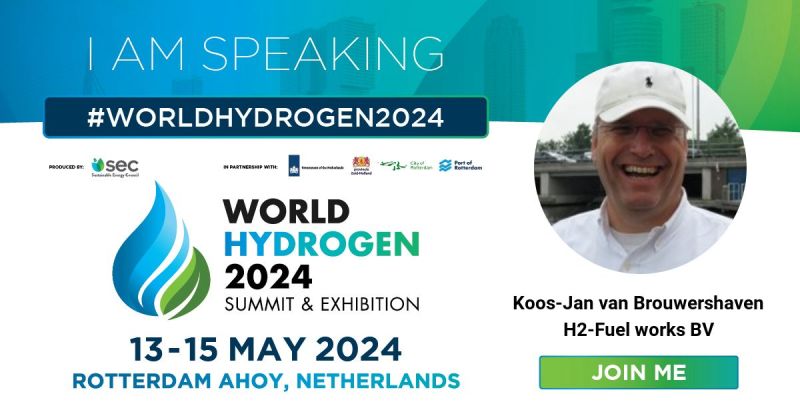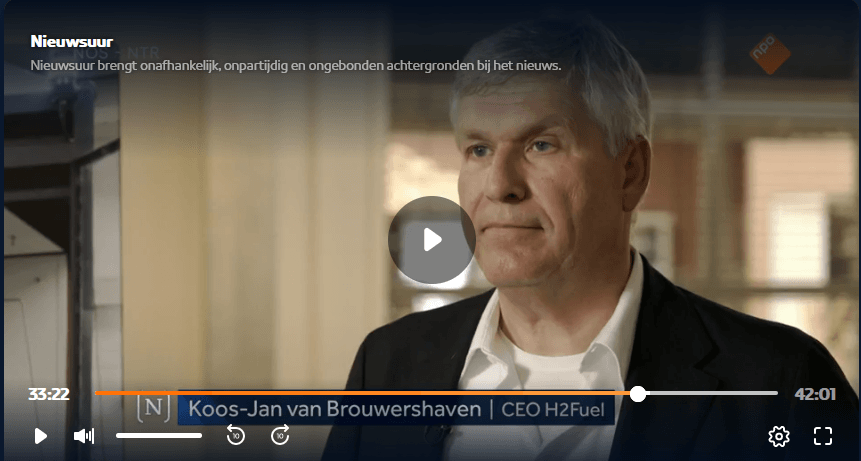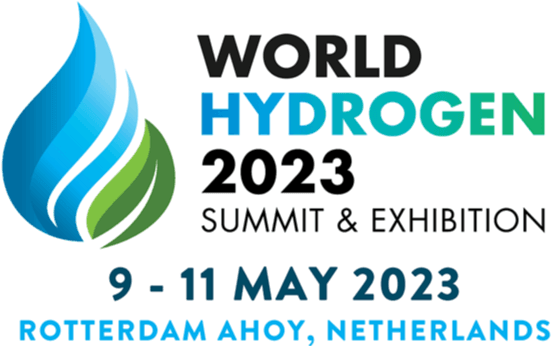

Next step: H2Fuel starts building a mobile demonstrator
We are introducing the build of a mobile demonstrator which will bring our innovative, circular concept from a Technical Readiness Level 5 towards Technical Readiness Level 7. This means that our concept can operate on an industrial scale. We believe such demonstrator can be operational during next year. This demonstrator will have a hydrogen release reactor build in a container whereby the hydrogen is directly fed into a fuel cell to generate electricity and basically acts as a generator set. This generator set will feed the batteries from the electrical truck which is transporting the demonstrator to various locations. These locations can be potential future clients or festivals and/or concerts. By this we can show our green and circular concept but also proof that our concept is a decentralised solution for energy demand. Please find below an artist impression of our demonstrator.
Some background:
In nature, hydrogen occurs in a bound form and becomes a gas once released, expanding more than 900 times in volume, becoming flammable and explosive. H2Fuel overcomes this obstacle by binding hydrogen to a salt (NaB – NaBH4) as a result of which these disadvantages disappear and the hydrogen is safely manageable. By making these changes, H2Fuel enables hydrogen to be transported as a solid in bulk under atmospheric conditions by conventional means (ship/train/truck) and stored indefinitely. After distribution, the hydrogen can be released by using ultrapure water and an acid and does not require any additional energy. This process releases the entirety of the stored hydrogen, as well as the same amount of hydrogen from the added water. Therefore, resulting in a doubling of the hydrogen stored in the H2Fuel. In a truly circular and sustainable process, the residues after release are taken to be reused.
Key Facts of H2Fuel
Capacity: For the storage of 1 kg of hydrogen, 9.4 kg of H2Fuel’s carrier NaBH4 is required. This 1 kg of hydrogen is doubled to 2 kg of hydrogen in H2Fuel’s patented release process.
Energy Density: H2Fuel’s carrier NaBH4 has a 2-4 times higher energy density as the alternatives and is comparable to the energy density of diesel.
Transport and Distribution: The transport and distribution of hydrogen with H2Fuel is 20-35% cheaper than any alternative and takes place as a solid under atmospheric conditions without energy loss and by conventional means such as ships, trains and trucks.
Storage: With H2Fuel, hydrogen can be stored indefinitely under atmospheric conditions without energy loss or special facilities and is 80-95% cheaper than any alternative.
Release: H2Fuel’s patented release process is an exothermic process that requires no additional intermediate process steps for the release of the 99.8% pure hydrogen. During this release process the same amount of hydrogen is released from the water for free, which doubles the yield. The release takes place at the consumer on demand.
Safety: Since no gas formation occurs in the entire process up to release, H2Fuel is completely safe and therefore does not require (future) strict legal regulations from a safety point of view. In addition, hydrogen only becomes gaseous at the consumer when it is released immediately before consumption, so that large gaseous storage is avoided.
Calamities: H2Fuel’s carrier NaBH4 is non-toxic, non-flammable, non-explosive, has no leakage issues and consists of natural substances, so that the composition naturally breaks down into the original substances in the event of an emergency.
Production of Hydrogen: The original amount of hydrogen stored in the H2Fuel’s carrier is doubled during its release as a result of the specifics of H2Fuel’s release process. This effectively means that 1 kg of hydrogen stored in the H2Fuel’s carrier delivers 2 kg of hydrogen during its release process.
Production Costs: The production costs of H2Fuel’s carrier NaBH4 are higher than the alternatives. But assuming production in areas with a lot of green, cheap energy and export to areas with a high demand for green hydrogen and expensive green energy, well to wheel and back again H2Fuel is on average 50% cheaper than any hydrogen alternative, mainly due to low transport and storage costs.
Circularity: The reuse of the residual materials after the release of the hydrogen has created a circular circuit that not only saves costs, but also keeps the almost inexhaustible raw materials in sufficient supply.
Condition: H2Fuel’s carrier NaBH4 must be kept dry from production to release in order to maintain its energy for 100%: otherwise energy loss will occur.
These scientifically proven key facts not only show the superior characteristics of H2Fuel, but also demonstrate the preferred way for transport, storage, distribution and release (including production) of hydrogen in a save, manageable, profitable and circular way.
Related News

Take advantage of COP28
Dutch climate technology

Great excitement at World Hydrogen Summit
Our H2Fuel team experienced two incredibly interesting days during the Hydrogen Summit in Rotterdam.








